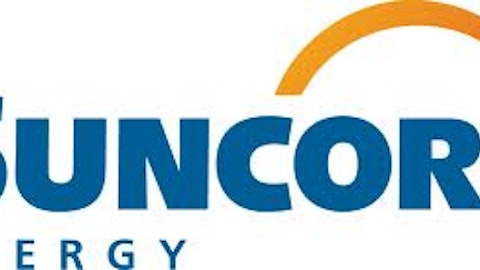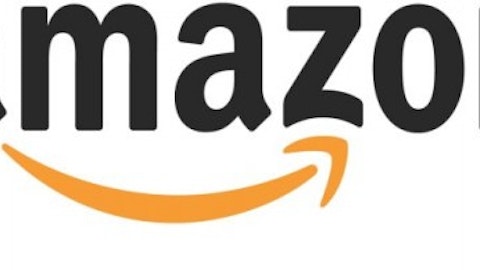In the past month, eBay Inc (NASDAQ:EBAY) experienced a 6% decline in its stock price. Not surprisingly, now at around $52 per share, eBay has only become more attractive as a long-term investment. The current stock price may not do justice to the largest Internet auction company in the world, whose revenue increased rapidly in two years (total revenue in 2012 $14.1 billion, versus $9.2 billion in 2010).
But is there more room for growth?
First, don’t forget that eBay Inc (NASDAQ:EBAY) owns PayPal, which has become the leader in mobile payments, handling almost $14 billion in mobile payments volume in 2012 alone. With 123 million digital wallets in the cloud and a truly global platform, everybody trusts PayPal because of its top technology and because in
10 years the company has processed half a trillion dollars in transactions. This is a huge competitive advantage that translates into more revenue and customers, as Internet (specially, mobile) payments become the standard.
About $20 billion in mobile payments volumes are expected this year. Honestly, at this growth rate, PayPal is not part of the future of mobile payments, it is the future of mobile payments. According to Morningstar, more than 60 of the top 100 online retailers in the U.S. already accept PayPal. The more merchants, retail stores, and developers that join PayPal, the stronger PayPal’s competitive advantages get, as being big in this business does matter. The scale of PayPal transmits trust.

eBay has everything it takes to sustain the amazing performance it had in the U.S. and replicate it globally
So, what about the historic cash flow of this company, eBay.com? It also has experienced an amazing growth rate in U.S. operations despite its already huge size in 2010, but is there room for more growth? The answer is yes, because of eBay.com’s huge global opportunities. Currently, the firm has presence in more than 40 countries, and internal revenue already accounts for 52%. However, e-commerce in those countries is still a relatively new concept. This will change dramatically in the next five years, and growth rates should eventually exceed the U.S. by several percentage points.

eBay Inc (NASDAQ:EBAY) is well prepared for replicating its U.S. success in emerging economies because it is entering these markets at an early stage. It also has the benefits of having PayPal on its side and many important retail stores. A start-up could make a technologically decent auction site, with some effort, in months, but establishing good relationship with top retail stores could take years.
eBay.com, on the other hand, is both excellent in terms of technology and relationship with retail stores. It is also making strategic acquisitions abroad (which are more tax efficient): a $40 million deal to buy SnapDeal.com, India’s newest online marketplace, confirms eBay Inc (NASDAQ:EBAY)’s serious intentions to become a leading force in emerging markets.
Management has set a goal of $300 billion in enabled commerce volume by 2015. This means almost doubling the size of volume in 2012 (about $175 billion), but if mobile enabled commerce and emerging markets grow as expected, the target will be reached.
Notice that the company is in great financial shape: there is about $11.5 billion in cash, short and long-term investments, while only $4.5 billion registered as total debt (as of March 2013). About $7.7 billion in cash and cash equivalents is held outside, making this excellent money for acquisitions of foreign e-commerce start-ups and early stars. There is also a $2 billion dollars share repurchase program on its way, which is likely to increase EPS artificially.
Competition is not a big problem for eBay
First, notice that eBay Inc (NASDAQ:EBAY) has strategically invested in some competitors who offer both substitutes and complementary goods, including Mercadolibre Inc (NASDAQ:MELI), Tradeshift, Magento (shopping cart), BillFloat, and FreshBooks (e-invoicing). MercadoLibre is an e-commerce site with a strong position in Latin American markets (according to Nielsen, about 52,000 people generate all of their revenue from Mercadolibre Inc (NASDAQ:MELI)) which operates in the same way as eBay.com does. But, eBay Inc (NASDAQ:EBAY) has a 19.5% ownership interest in the firm and couldn’t be more happier about MercadoLibre’s success in Latin America. As a matter of fact, both companies have had excellent relations since 2001, and I doubt this will change.
It seems that the real competitor is not a regional e-commerce site, but actually Amazon.com, Inc. (NASDAQ:AMZN), because Amazon too has excellent relationship with top retail stores, and the scalability and trust needed to be a top player in this industry. Just like eBay, Amazon.com, Inc. (NASDAQ:AMZN) also knows the importance of international expansion, diversifying revenue by entering new markets constantly (the recent emphasis on Amazon Prime and Amazon.com, Inc. (NASDAQ:AMZN) Web Services are a couple of examples), and having good relations with top retail stores and merchants.
But, I believe this market is to become big enough for two giants to coexist. Most merchants have both eBay Inc (NASDAQ:EBAY) and Amazon accounts. The same thing applies for users. And everybody is using PayPal. Finally, users looking for auctions will always go for eBay.
The article The Time to Buy the Largest Internet Auction Company Has Come originally appeared on Fool.com and is written by Adrian Campos.
Adrian Campos has no position in any stocks mentioned. The Motley Fool recommends Amazon, eBay, and MercadoLibre. The Motley Fool owns shares of Amazon.com, eBay, and Mercadolibre. Adrian is a member of The Motley Fool Blog Network — entries represent the personal opinion of the blogger and are not formally edited.
Copyright © 1995 – 2013 The Motley Fool, LLC. All rights reserved. The Motley Fool has a disclosure policy.






